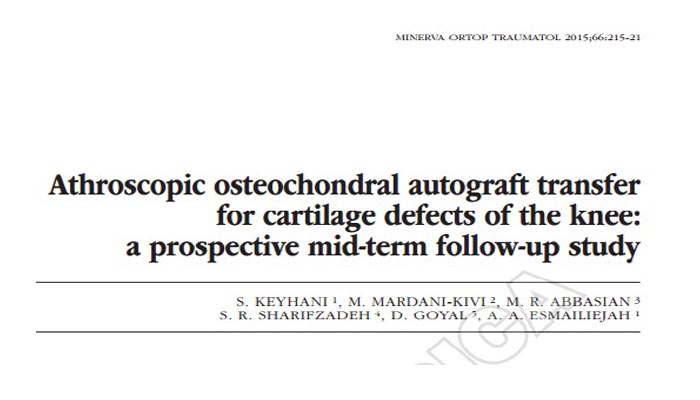- تاریخ درج : ۲۱ فروردین ۱۳۹۶
- تعداد بازدید: 2988
- نویسنده : dr.mohsen mardani-kivi
-

AIM: The aim of this paper was to evaluate the clinical outcome of arthroscopic osteochondral autograft transfer in people with grade IV size 1-4 cm2 cartilage defects of the knee.
METHODS: This is a prospective study on 84 patients with grade IV chondral lesion who underwent arthroscopic mosaicplasty. The International knee documentation committee (IKDC) score and Lysholm knee score (LKS) were used to evaluate the functional outcome. Furthermore, the impact of factors such as age, the afflicted condyle, number of plugs, presence of accompanying lesions, and level of activity before surgery, and complications of surgery were studied.
RESULTS: The mean lesion size was 2.1±0.51 cm2. The patients were followed for an average period of 67±14 (range of 44-98) months. The IKDC Score at the final follow up (83.5±12.7) was significantly improved from pre-operative score (51.9±6.2). Using the LKS score, 20.2% of patients had excellent outcome, while the 72.6% and 7.2% yielded good and fair outcomes respectively. The clinical outcome was better in young athletes patients, those who had not any accompanying intraarticular or lateral condylar lesions, and those who had fewer plugs (P<0.05).
CONCLUSION: The mid-term results of arthroscopic osteochondral autograft transfer proved it to be an appropriate option for grade IV cartilage lesions with 1-4 cm2 size, particularly when it is performed for younger patients with lesions smaller than 2.5 cm2.
-